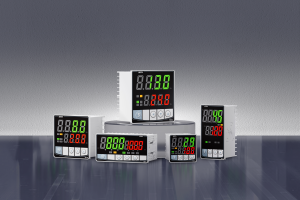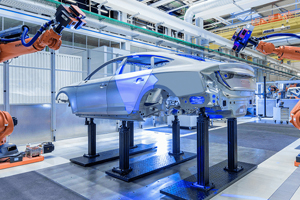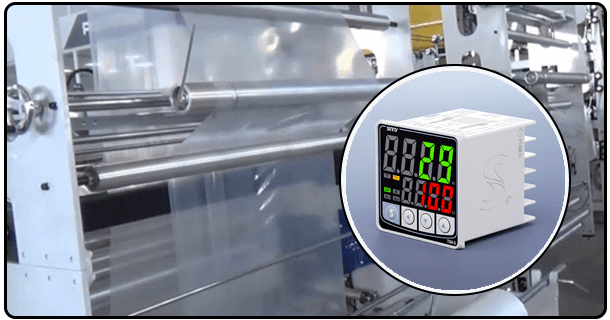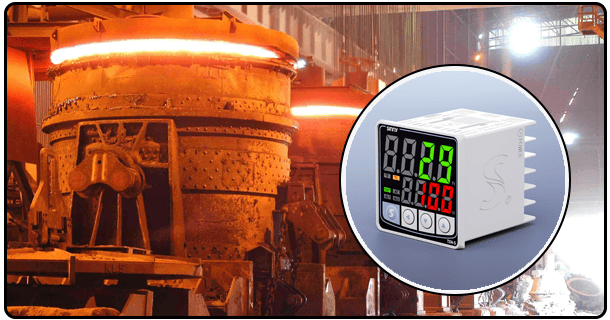Understanding the PID temperature controller circuit: Detailed analysis
1. Introduction
The regulation of temperature is a requirement for countless industrial, scientific, and commercial applications. For operational efficiency, product integrity and safety, as well as optimising energy usage, it is essential to maintain precise thermal conditions. Modern processes demand accuracy and responsiveness, but traditional temperature control methods often fall short. To address these limitations, sophisticated control strategies have been developed, among which the Proportional-Integral-Derivative (PID) control algorithm holds prominence. This algorithm is implemented in a highly sophisticated way by the PID temperature control circuit. It allows for precise regulation of process variables using feedback provided from temperature sensors. The article is intended to be a thorough exploration of the PID controller circuit. This article will describe its components, explain the basic principles that govern its operation in a closed loop control system, examine common implementation methods and look at the tuning process. This in-depth analysis will give readers a comprehensive understanding of thermal management technology.
2. The Core Components in a PID temperature controller circuit
The PID controller unit itself, the comparator or error detector, and the actuator are all essential components that must work together. The temperature sensor is one of the components. Other elements include the comparator, error detector, PID unit, actuator and power supply. Many practical implementations also include a Human-Machine Interface for the user's interaction. These components each play a unique and important role in the control process.
The temperature sensor is the main sensing element in the circuit. The temperature sensor's primary function is to measure accurately the required process variable. Temperature measurement accuracy and quality directly affect the efficiency of the control system. These circuits use a wide range of temperature sensors, all with unique properties. Thermocouples are a common type, as they generate a voltage that is proportional to the temperature. They are also known for being robust and having a wide range of operation. Resistance Temperature Detectors, usually made from platinum, are high-accuracy and offer high precision, particularly over a certain range. Comparator / Error Detector:
The comparator is a crucial component of the PID control system. It performs this function after the sensor has taken the measurements. The comparator compares the measured process temperature with the setpoint temperature that is defined by the end user. The result of this comparison is an error signal that mathematically represents the difference between the actual value and the desired setpoint. The PID controller then feeds this error signal into its unit. This error signal is fed directly into the PID controller unit.
PID Controller Unit:
This unit acts as the brain of the circuit. It is responsible for processing error signals and producing the correct control output. This unit is implemented in a variety of ways, but two main approaches are most common: digital circuits using DSPs or microcontrollers. The core logic is the same regardless of implementation. It involves the calculation of contributions for the three PID terms, Proportional Integral and Derivative.
Proportional Term (P): This term produces an output signal directly proportional with the magnitude of error. The proportional term will initiate a stronger corrective action if the temperature deviates from the setpoint. The proportional term is a quick initial reaction to bring the temperature back towards the target.
Integral Term (I): This integral term is used to address the accumulation of errors. The integral term integrates error signals over time to produce a control signal that will increase (or decrease) in response as long as there is an error, no matter how small. Integral term's primary goal is to remove any steady state error. That is, to make sure the temperature settles exactly at setpoint and not slightly off.
Derived (D) Terms: A derivative term is a prediction of future errors, based on how fast the error rate changes. The control output is designed to counter the changes in error that are occurring rapidly. It helps dampen any oscillations which may occur when the P-I terms are too aggressive. This prevents the temperature overshooting its setpoint, and allows it to stabilize smoothly. This also helps to speed up the initial response time by anticipating any corrections that may be needed.
This total control signal is then formed by combining the outputs of the P, D, and I calculations. The signal used to represent the desired temperature is usually an electrical current or voltage.
It is the actuator that executes the commands generated by the PID control. The actuator's main function is to adjust the heat or cool input into the process to minimize the error detected by a comparator. In temperature control circuits, common actuators are electrical heating elements such as resistive coils (wire wound heaters), which increase process temperatures. Cooling elements include Peltier (thermoelectric cooling) devices or fans, which decrease process temperatures. Solid State Relays are often used to control these heating and cooling elements. Solid State Relays (SSRs) are electronic solid state switches which can control power to the load precisely.
Power Source:
A stable, adequate and reliable power supply is required for all electronic components in the PID circuit. Power supply units convert the main voltage (e.g. AC 230V, DC 24V, etc.) to the DC voltages needed by sensors, comparators, PID controllers, actuator drivers (if required), and the HMI. Power supply design must be robust and able to handle the entire current drawn by the circuit in all conditions.
Human-Machine Interface:
3. How the PID temperature controller circuit works: The control loop
It is easiest to understand the operation of PID temperature control circuits by using the closed-loop system concept, which can also be referred to as feedback control system. The system constantly monitors and adjusts to reduce the deviation of the set point. This process is a constant cycle.
A. Feedback System:
1. Temperature sensor: The sensor measures continuously the temperature that is present in the process.
2. The comparator stage then processes the raw data in temperature, which is typically expressed as a change in voltage or resistance. Depending on the sensor type, this processing may involve signal conditioning, such as amplification or linearisation.
3. Output of the comparator is the temperature measured, in a form suitable for the PID control (e.g. voltage).
4. The PID unit will then use this temperature measurement value as input.
B. Calculation of PID:
1. The error signal within the PID control unit is calculated by the difference between measured temperature and predefined setpoint temperatures (Error = Measuring Temperature – Setpoint).
2. The PID algorithm uses this error as its primary input. This error is processed by the controller over time. It calculates the contribution of the Proportional Integral and Derivative terms using its internal logic (Kp), and tuning parameters.
3. This total control signal is generated by a PID controller. It's the sum of (or weighted combinations) the P, D, and I outputs. The control signal is the level of correction desired. A positive error, such as actual temperature > setpoint, will usually result in positive control signals, which indicate the need to heat, while a negatively skewed error, will typically result in negative control signals, which indicate the need to cool. The intensity of a control signal is determined by its magnitude.
C. Actuation:
1. A control signal is transmitted to the actuator, which typically comes from the PID Controller as voltage or current.
2. This signal is received by the actuator, which then translates this into physical actions. The actuator will increase the amount of power delivered to the heater if the signal from the SSR indicates that the process needs to be heated. If cooling is needed, an actuator could activate a Peltier or fan. As a solid state device, the SSR allows smooth modulation of heating/cooling strength based on control signals, resulting in more accurate temperature regulation.
D. Response System:
1. Actuator action directly affects the temperature of the system. As the system temperature starts to rise, it begins moving towards its desired setpoint.
2. Temperature sensors continuously measure the value as it changes.
3. The cycle is repeated: Measurement, comparison, PID calculations, actuation.
Explaining the P, I and D effects:
Interplay between the P, D, and I terms is what determines dynamic behavior and stability in the loop. The proportional term gives an immediate reaction that is proportional to error. This helps to quickly reduce deviation, but may leave a residual. Integral eliminates the steady-state errors over time, by adding up the error. The Integral term may introduce lag, however, if error is changing slowly or the integral windup occurs (where integral term becomes too large). By reversing the rapid change in error, it increases stability. The derivative term acts as a damping device, improving the smoothness of system response. It is important to find the perfect balance when tuning the gains for P, I and D (Kp Ki Kd). This is the only way you can achieve fast, accurate and stable temperature controls.
4. Common Implementation Techniques
You can implement the PID algorithm using analog electronic components, or digital microprocessors. The methods each have their own advantages and disadvantages.
A. Analog Implementation using Op-Amps:
A PID analog temperature controller is constructed by combining operational amplifiers with resistors and capacitors. The error detector/comparator is usually formed by using differential amplifiers and summation amplifiers. The resistor network is used to create a voltage division proportional the error. I-term uses an integrator (usually an opamp in a feedback loop with a capacitance), whereby the output voltage is used to integrate the error. D-term is usually implemented with a differential circuit, which can be less popular in the real world due to its noise sensitivity. It may also be approximated by using a low pass filter and derivative amplifier on error signals. Analog implementations are simpler, faster, and more accurate for simple applications. However, they can also be sensitive to electrical noise, component tolerances and temperature drift. Potentiometer tuning may require manual adjustments, while achieving high precision is difficult. Analog PID circuits are a good solution for simple temperature control where performance isn't critical.
B. Digital implementation using microcontrollers or digital signal processors:
In recent years, digital PID temperature control systems are being implemented, usually using a Microcontroller or Digital Signal Processor. Analog-to-Digital Converters (ADC) are used to convert the analog values from the temperature sensors into digital values. The MCU/DSP then executes the PID algorithm based on software routines stored in its memory. Digital PID calculations are simple mathematical operations performed on digital error values. The controller will then produce a digital signal after computing the outputs P, I and D. The signal can be directly sent to a Digital-to-Analog Converter to create an analog voltage to control an SSR or used to generate a Pulse Width Modulation signal (PWM), which is especially effective to control SSRs and other actuators. The digital implementation has many advantages over the analog method. The ADC/DAC has a finite resolution, which allows the software to easily modify and tune the PID parameters. It also offers greater flexibility when incorporating diagnostics or advanced control strategies. Digital controllers are also easily interconnected with other digital systems for control and monitoring (e.g. computers or networks). It is important to have programming knowledge and computational power, but modern MCUs can handle most PID calculations.
5.Tuning parameters:
Proportional gain (Kp). The parameter that determines how responsive the system is to the error. Higher Kp can result in faster responses, but it may also increase oscillation and instability.
The Integral Gain parameter (Ki). It is a measure of the cumulative effect of previous errors. Higher Ki can help eliminate error faster, but it may also cause the system to respond slower and be more sensitive to noise.
Derived Gain (Kd). The parameter is a predictor of future errors, based on rate changes. Higher Kd dampens oscillations better, but it can also be more sensitive to noise in the measurement. This could lead to erratic behavior.
Common tuning methods:
Ziegler Nichols Method: It is a widely-used heuristic that requires two steps. First, determine a “ultimate benefit” (Ku), and an “ultimate period” (Tu) of the system. This involves gradually increasing the ratio gain (Kp) up until the oscillations reach a constant frequency (known as ultimate cycle). The PID gain is calculated by using formulas that are based on Ku or Tu. This method, while relatively straightforward, is best suited for first-order, well-behaved processes. It may need to be adjusted for higher-order or other implementations, such as digital versus analog.
Auto-Tuning Software: Most modern digital PID Controllers have auto-tuning algorithm built in. The algorithms adjust PID parameters automatically by applying disturbances and monitoring the responses. The user can reduce their tuning efforts by a significant amount.
Manual tuning: This may be necessary in some situations, especially for simple systems, or when automatic tuning is unavailable. It involves adjusting Kd, Ki and Kp values iteratively, based on observed system responses, using rules of thumb, or detailed graphic methods.
No matter which method is used, it is important to select a Kp, Kd, and Ki value set that will result in a stable, accurate and responsive control system, keeping the temperature of the process close to its setpoint, with little overshoot or oscillation.
6. The Advantages of using a PID temperature controller circuit
Adopting a PID controller circuit has several advantages over other control methods, especially in applications that require high precision and reliability.
High accuracy and tight control: Because the PID algorithm can calculate corrective actions based on errors, it is able to keep the temperature of the process very close to its setpoint. This allows for a much more accurate temperature control that on-off controllers (bang-bang).
Reduced Overshoot and Faster Response: In comparison to on/off controls, where the temperature can overshoot before stabilising the setpoint, PID can bring the temperature close to the setpoint faster and with less deviation. This can lead to a quicker overall response.
Improved Stability and Reduced Oscillations: The derivative in the PID algorithms helps dampen the oscillations which could otherwise be caused by the aggressive switching that occurs with simpler controllers. The temperature control process becomes more smooth and stable.
Handling Disturbances Effectively: In general, PID systems can handle disturbances better - unanticipated changes to the environment or process. The feedback loop is continuous, allowing the controller to identify deviations in real time and to make adjustments accordingly. This helps maintain a stable system.
7. Disadvantages & Considerations
A PID circuit is not without its challenges.
Complexity Design, implementation and tuning of PID controllers can be much more complicated than simpler On-Off controllers. It is important to understand the PID algorithms and dynamics of the process being controlled.
Tuning requirement: Proper tuning, as mentioned previously, is essential. It can take a long time to find the best PID values. Expertise is often required. A poor tuning may lead to a suboptimal or unstable performance.
Noise Sensitivity: A controller's integral term can be affected by noise from the signal of the temperature sensor or any other part of the circuit. It may be necessary for the controller to use filtering techniques in order to guarantee reliable operation.
Costs of components: Digital implementations need microcontrollers and DSPs as well as ADCs and DACs.
- Understanding a PID Temperature Controller Example: A Practical Guide
- Understanding PID temperature controller 12V : A detailed guide























